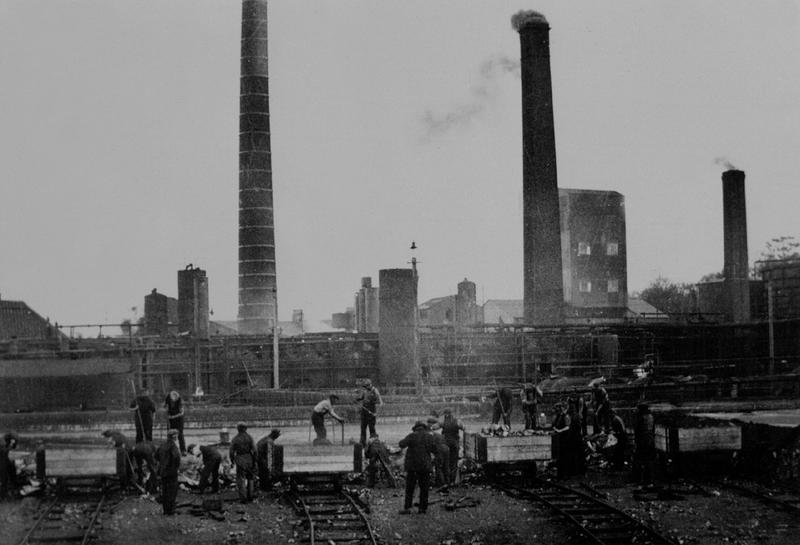Delve into the history of Grangemouth’s international timber trade…
Timber
The history of Grangemouth is closely linked to the history of the Forth and Clyde canal. The town was founded in 1777 to accommodate ships travelling through this canal. Ships arrived at the port of Grangemouth. Their goods were reloaded on barges to travel along the Forth and Clyde canal to the West of Scotland or on train waggons to be transported to other parts of Scotland. Slater’s Royal National Commercial Directory and Topography of Scotland of 1861 highlights the importance of the port of Grangemouth and “its numerous and commodious quays, granaries, and warehouses for goods, and its capacious wet docks and basins for timber. It has also ship-building yards, a graving dock, bonded stores and timber yards; rope and sail making is extensively carried and their [sic] are saw mills and large collieries adjacent” (p. 1235). The Gazetteer of Scotland names the timber trade as one of “[t]he principal imports” in the area (p. 212). The Falkirk Herald even names Grangemouth as “Timber Town” in an article in 1938 (p.49).
Salvesen
One of the firms in Grangemouth involved in the timber trade was the company J.T. Salvesen. The company was founded in 1843 by Johan Theodor Salvesen (1820-1865), who was born in Norway. He used his family connections to import timber from Norway. In addition, the company also imported timber from other parts of Scandinavia, the Baltic, the United States of America (Salveson Archives GB 237 COLL-36).
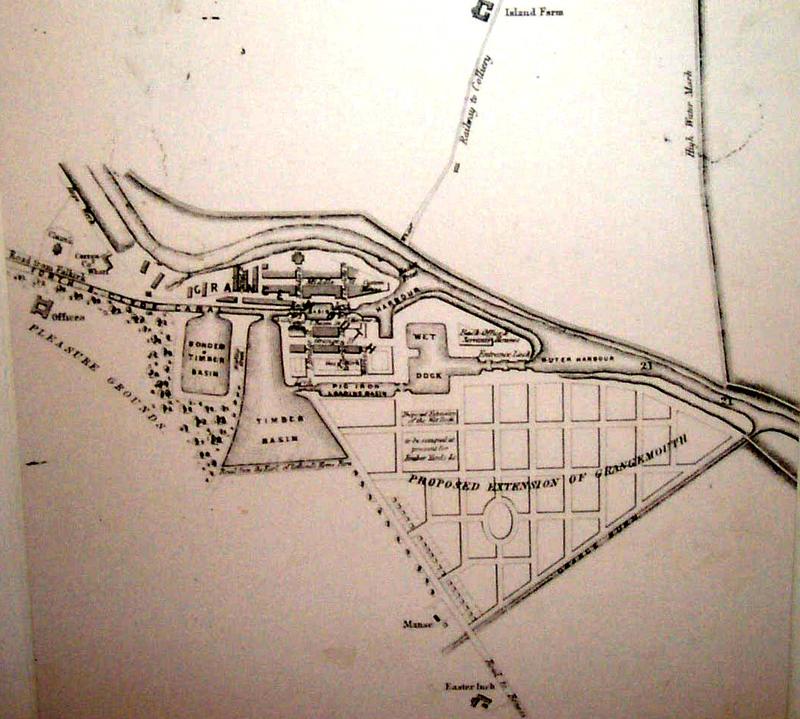

This map of Grangemouth from 1854 demonstrates the importance of the timber trade for Grangemouth. The town has two timber basins to store timber. Timber was imported by ship from various regions: Scandinavia, the Baltics, the United States, and Canada. In Grangemouth, timber was unloaded and put into train waggons or into barges for further transportation.
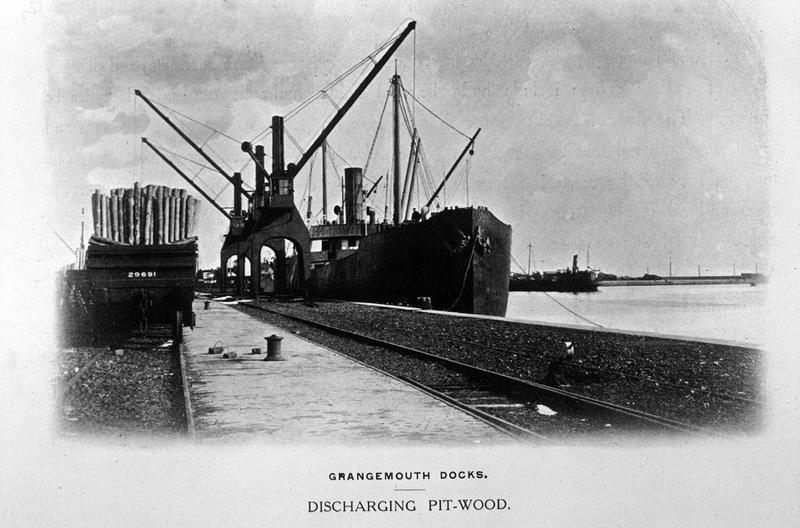

Discharging Pit-wood
The wood in this photo will be transported to coal mines (also called “pits”) to stabilize the mine shafts and to prevent any collapses in the mines (Falkirk Archive). Further uses of timber was in the construction of buildings and for railway sleepers (Salveson Archives GB 237 COLL-36).
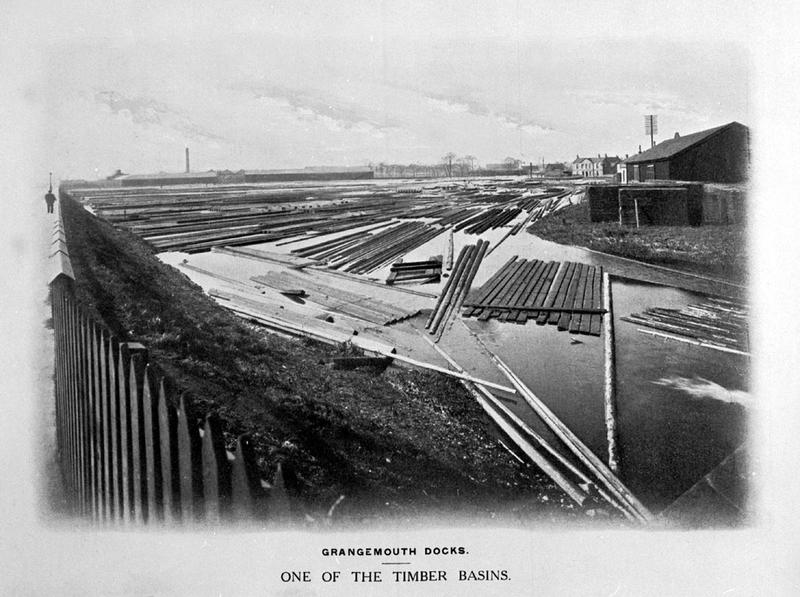

Timber Basins
Timber is stored in water to maintain the wood’s quality and to prevent damage through pests and dryness. It is stored in timber basins before being transported to sawmills with barges through the canal or by train on land.
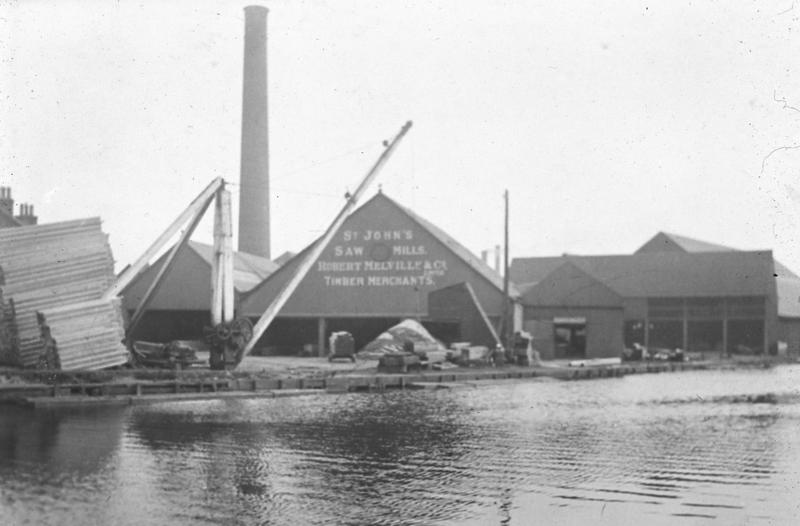

St John’s Sawmill
According to the Falkirk Archive, this sawmill “was called after St John’s Bay in Canada from where much of their timber came.” St John is located in the East of Canada, on the western side of the island Newfoundland. The Falkirk Herald notes in 1888 that further timber supplies also came from Quebec, Canada (p. 5).
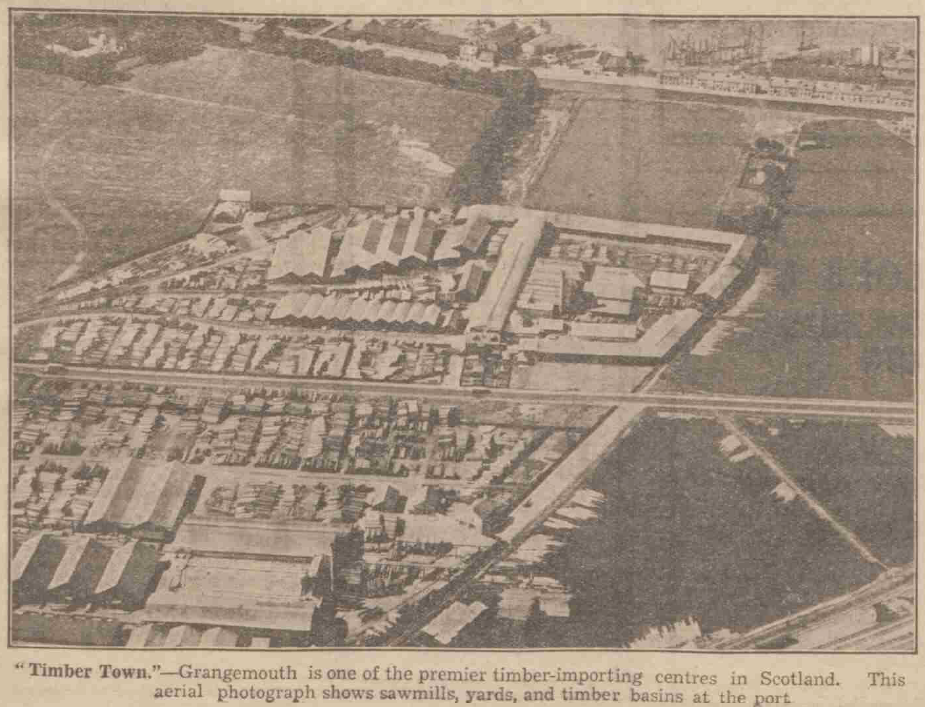

“Timber Town” (1938)
This photograph, printed in The Falkirk Herald on 31 December 1938, shows the importance of the timber trade in Grangemouth. The timber yards on the left side and the middle of the photo are surrounded by timber basins on the right side.
By Alex Abletshauser, Great Place volunteer, Hidden Heritage: Industry and Empire project 2020.

